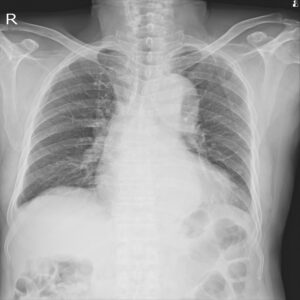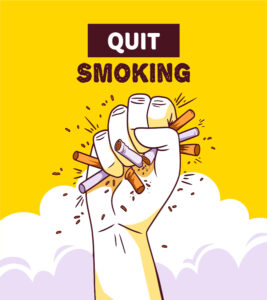
What does COPD stand for?
The term COPD is an abbreviation for Chronic obstructive pulmonary disease.
What does COPD mean? Is COPD emphysema?
Copd is a general term that includes both emphysema and chronic bronchitis. Both of these conditions are chronic restrictive lung diseases. Most often a person has a mix of symptoms of both emphysema as well as chronic bronchitis so often both conditions are lumped together and called COPD. These symptoms include a cough, wheezing, excess mucus, and feeling breathless. How does COPD affect your lungs and ability to breathe?
Your airways become inflamed and narrowed. These changes cause the amount of oxygen getting into your blood and out to your body to be decreased. When your lungs take in oxygen (when you inhale), they release carbon dioxide (when you exhale). The inflammation and narrowing of your airways from COPD cause less carbon dioxide to get released from your body. To simplify this explanation. The poor exchange of oxygen and carbon dioxide leads to you feeling breathless. Your tolerance or ability to do daily activities decreases as the condition progresses.
Eventually, even with supplemental oxygen, you cannot do daily tasks such as showering or dressing without assistance. COPD affects many people not only in the US but the world.
According to the American lung association, 16.4 million people in the US have COPD and millions more have it but have not been diagnosed yet. COPD is the third leading cause of death in the United States.

Risk factors for Getting COPD
Preventing COPD is very important, COPD is not curable. Do not smoke. If you do smoke, quit. Smoking is the leading cause of COPD. There are several products available to help you quit smoking such as nicotine patches, gum, and lozenges. Find support to help you quit. The American lung association has a program called Freedom for Smoking, find it here. Avoid secondhand smoke and other lung irritants. Breathing in fumes or chemicals can cause COPD. There is a genetic component in COPD in about 5% of people diagnosed. They lack a protein that helps protect their lungs. This condition is called Alpha-1 deficiency.
There are many different medications and treatments for COPD. Read on to learn more about some of the medications and treatments.

Treatment of COPD
Bronchodilators both short and long-acting are common medications prescribed. They are most often administered using an inhaler. Bronchodilators work by relaxing the muscles in your airway causing the airway to widen or dilate increasing airflow. Short-acting bronchodilators include albuterol and Ipratropium. Long-acting bronchodilators include Tiotropium (Spiriva) and Formoterol (Perforomist).
Inhaled steroids are another medication used. Inhaled steroids work by decreasing inflammation in the airway. This helps to make the air passages wider allowing increased airflow. Examples of inhaled steroids include fluticasone (Flovent HFA) and budesonide.
Combination bronchodilators and steroid inhalers are also available. Examples of these combination inhalers include Symbicort and Advair HFA. This list of medications is just a small example of some frequently used medications there are many more.
Oxygen therapy and COPD
As your COPD progresses, your lungs will over time become too congested. They will be unable to supply your body with enough oxygen. The oxygen level in your blood will become too low to function without supplemental oxygen. Often this occurs first with physical activity, there are small portable oxygen devices you can take with you when this occurs. You will at some point likely need oxygen at all times. There are larger oxygen concentrators that can be used in your home, such as this one. You can purchase the oxygen tubing here.

Exacerbation of COPD
If you have a sudden increase in your symptoms it is important to seek medical attention quickly. You can have what is called a COPD exacerbation. This often occurs due to a respiratory infection such as pneumonia or acute bronchitis. It can also occur due to breathing in an irritant or air pollution.
You will often need to be treated with oral steroids and possibly antibiotics. In Addition to broncular dilators. You may need to stay in the hospital for a short time and be seen by a respiratory therapist and receive treatment. These flare-ups can become fatal if not treated promptly.
Life expectancy with COPD
Early treatment and quitting smoking, if you do, can help improve your life expectancy if you have COPD. It is highly recommended that you get a flu shot every year and receive the Pneumovax if you have COPD. Having COPD and getting one of these illnesses can be deadly. Web MD has a very good article that goes into a lot of detail regarding life expectancy and COPD. You can find that article here if you are interested in learning more. Do not stop living your best life!!

Living with COPD
There are many treatment options to improve symptoms and quality of life. I encourage you to discuss them with your doctor’s treatment options for your COPD.
Also discuss with your doctor any feelings of helplessness, depression, or anxiety you may have. If you smoke, quit! Living with COPD is often mentally and emotionally challenging, please reach out for help. You do not have to go through this alone. There are numerous support groups online if getting out of your home is difficult. One place to find support is at the American Lung Association website, here.
Sometimes we have to take life one step at a time as well as one breath at a time. Hugs to everyone dealing with the challenges of COPD from me, the health journey nurse!!
